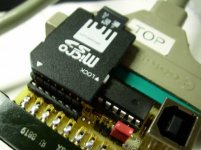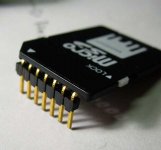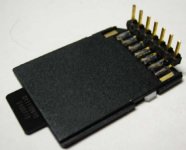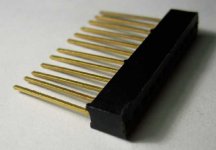dave_m
Veteran Member
The Commodore Universal Wedge or "DOS Support" utility is sort of working with the PETdisk as device 8. While the directory command >$ gives the same error as the BASIC 4 DIRECTORY command and BATPRO, the LOAD command /filename works fine. However, if you tried a >$ first, then the load will get a ?file not found error. But the second attempt will work. This is pretty good considering the designer did not take any of the PET utilities into account with his initial design. He advertized LOAD and SAVE commands and they work great.
I did manage to corrupt the PETdisk a little by saving some long filenames either on the PET side or the PC side (I don't remember) and got some funny looking filenames when reading the directory on the PET. The other files work fine, but I decided to reformat the SD anyway.
I wish the gadget used the standard SD chip instead of the microSD because while with a little trouble I can pull the microSD out of the adapter while it is attached to the PET connector, it is so teensy that I cannot insert it into the adapter without first pulling the gadget off the PET.
I did manage to corrupt the PETdisk a little by saving some long filenames either on the PET side or the PC side (I don't remember) and got some funny looking filenames when reading the directory on the PET. The other files work fine, but I decided to reformat the SD anyway.
I wish the gadget used the standard SD chip instead of the microSD because while with a little trouble I can pull the microSD out of the adapter while it is attached to the PET connector, it is so teensy that I cannot insert it into the adapter without first pulling the gadget off the PET.





